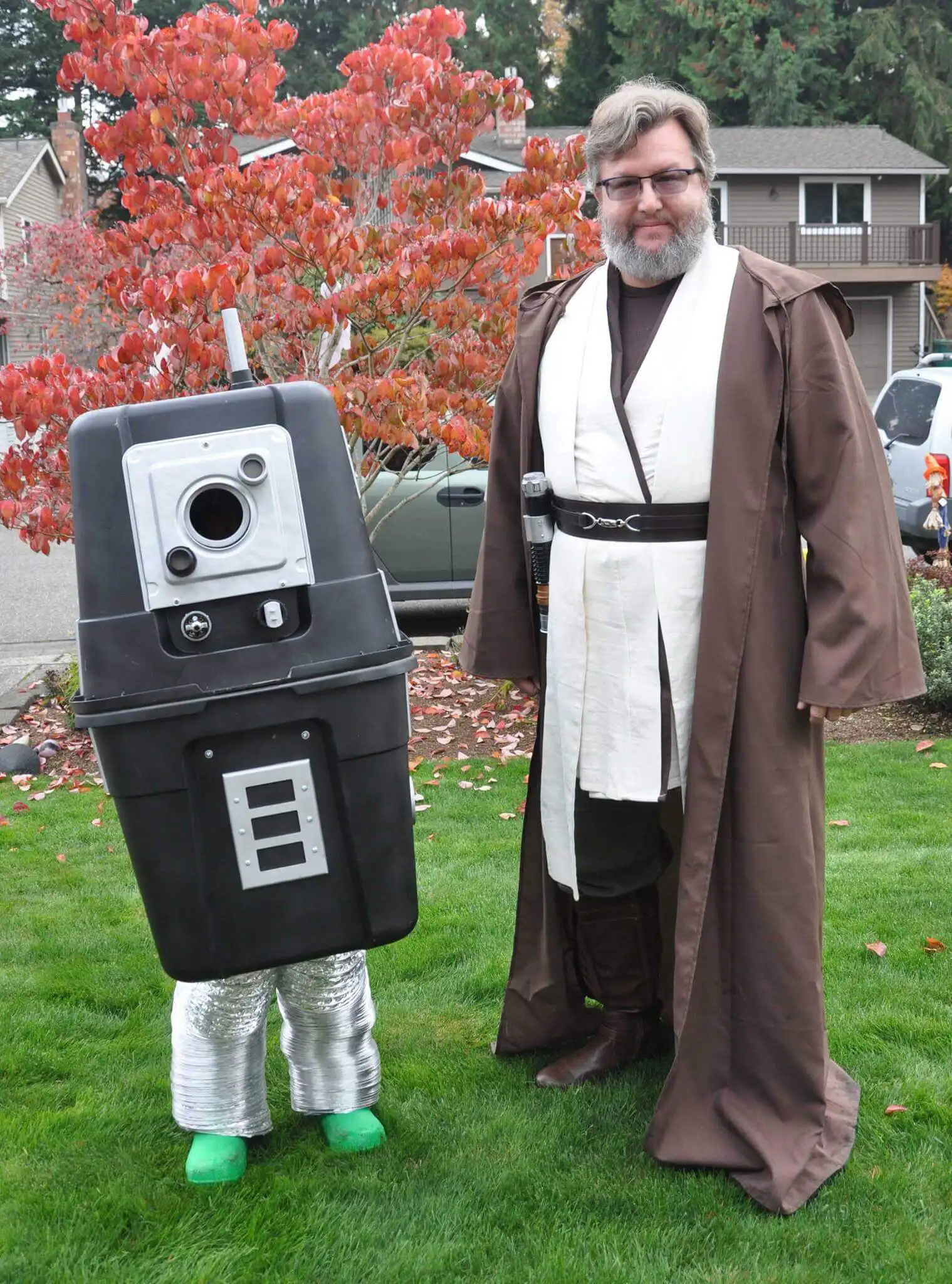
Bill Morrison was just a kid the first time he saw the original Star Wars, but as with so many of his peers who experienced the birth of George Lucas’s monumental media franchise in 1977, the film left an indelible impression.
“From the first moment the Star Destroyer loomed overhead, Star Wars really shaped the structure of my fantasy life and escapism,” Morrison says. “I was lucky enough to see the original trilogy in theaters, and between the action figures and toys that came along with them, Star Wars has played a significant part in my playtime, even up until today.”
While Morrison’s official job title is senior lecturer in the Department of Game Software Design and Production, a position from which he teaches students all about level design and other topics related to making games, he might be the closest thing DigiPen has to a real-life Jedi Master.
“We have many Star Wars fans among our faculty here at DigiPen,” he says. “I think I’m probably the most outspoken, and I unashamedly geek out over it with very little prompting.”
Morrison hasn’t just enjoyed the Star Wars franchise as a mere spectator, however — he’s also helped shape it during the course of his own game development career. In fact, it was his very love of Star Wars that helped him become a game designer in the first place.
“While I played different Star Wars games in the arcade and on my cousin’s Nintendo growing up, it was Star Wars: X-Wing for PC that really was a dream come true for me,” Morrison recalls. “I always loved flight sims and flight action games in particular, and when X-Wing came out in 1993, I was in the middle of going to school for programming. That game absorbed every spare minute of my time that I could throw at it.”
His zeal for the game eventually led him to discover a Star Wars: X-Wing editor program via CompuServe, a pre-Internet online service.
“In the flight sim and space combat forums there, I found a group where I could make and share my own missions, and I quickly became part of that early online community,” he says. “I learned so much about how that game worked and how to make content — what was fun and what was not fun, as well as what was the right amount of challenge.”
Through that community, he became acquainted with a LucasArts support staff member who helped steer him toward his very first game-related job, working in the studio’s product support department in 1995. From there, he soon landed a development role at Totally Games, where he went on to work as a mission designer on the third game in the acclaimed X-Wing series, Star Wars: X-Wing vs. TIE Fighter (1997), as well as the story-based expansion Balance of Power. He would later work as a level and scenario designer on the follow-up game, Star Wars: X-Wing Alliance (1999).
That, of course, was just the beginning of his game design career. Today, Morrison continues to help shape the world of games — including Star Wars games — by sharing his wisdom with the next generation of developers. In the spirit of celebrating tomorrow’s May the 4th, as well as the upcoming 45th anniversary of the franchise, we asked Morrison to share his personal top five picks for the best Star Wars video games to date.
Here, in his own words, were his top five selections.
5. Star Wars: Dark Forces series (1995-2003)
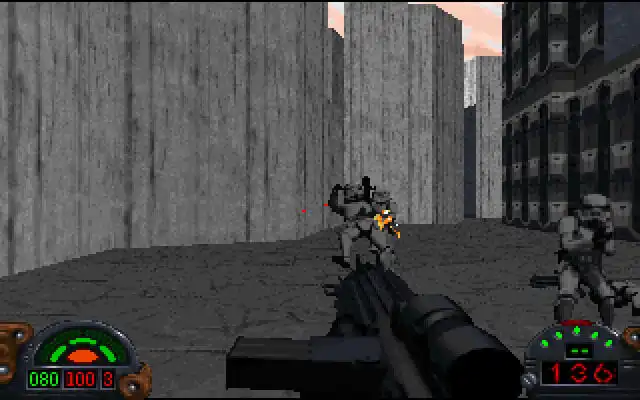
As games like Wolfenstein 3D and DOOM opened up gamers to an exciting new genre in first-person shooters, the Dark Forces (or Jedi Knight) series has always been one of my favorite collections of Star Wars games. Dark Forces was one of the first games that allowed me to really start exploring my favorite Star Wars locales, as well as realize that stormtroopers, despite their aim, could actually be a challenge. It introduced the Star Wars Legends character of Kyle Katarn, and in later games of the series, it allowed me to swing my first lightsaber in gaming combat — another wish fulfilled! There are some really great levels across the Dark Forces series, and as an instructor who specializes in level design, there are a lot of great takeaways from these games.
4. Star Wars: Knights of the Old Republic (2003)
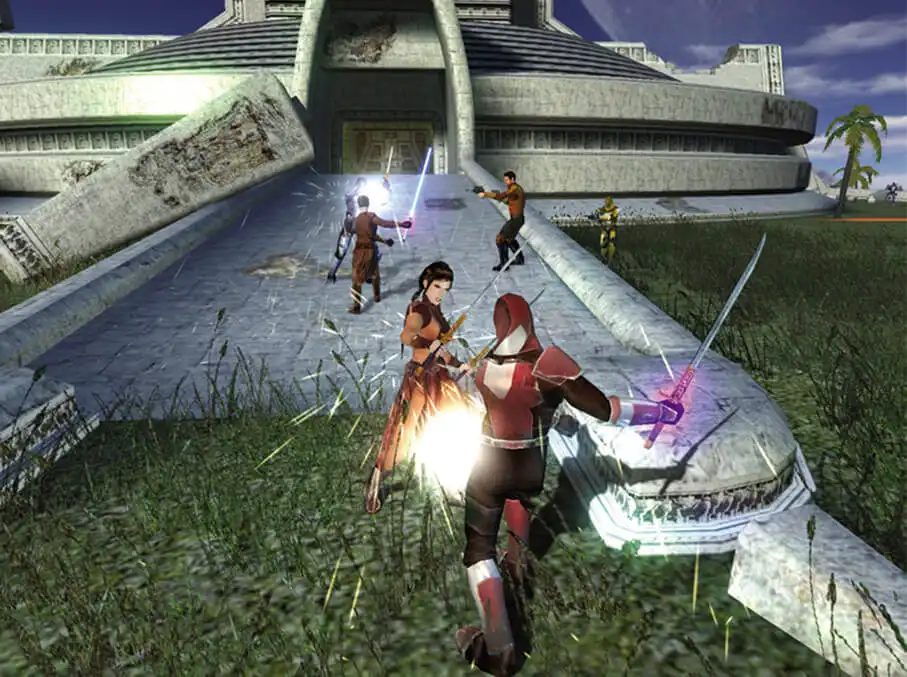
Knights of the Old Republic was the game that opened my mind up to the possibility of what the Star Wars universe could be like before the time of the classic trilogy. While the world was being introduced to the prequel films, this game really allows you to explore that universe in more detail, all the while telling a very compelling story, introducing memorable characters, and presenting one of the absolute best plot twists (in my opinion) in gaming history up to that point. It also took a deeper dive into what it meant to be a Sith, and it did so much worldbuilding, which has stuck with me to this day. This game is a must play for all Star Wars fans. It’s a fantastic party-based RPG that still holds up all these years later.
3. Vader Immortal: A Star Wars VR Series (2019)
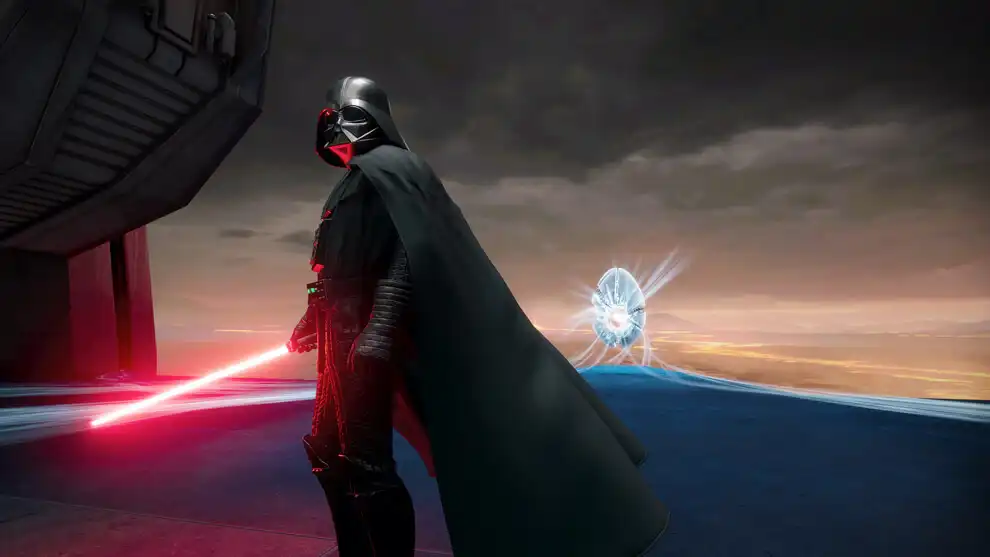
While it may not have reached the widespread distribution of other PC or console titles, the VR Vader Immortal series by ILMxLab is a really fantastic Star Wars experience. The story mode tells a compelling narrative, as well as provides an interesting history lesson on the planet Mustafar. But even more impactful than that is getting to swing a lightsaber in VR. The dev team really nailed the experience here. For me, it feels just like I would imagine it should and is really satisfying — especially the Lightsaber Dojo training mode. In between training waves, I still find myself doing Obi-Wan’s pre-combat stance from the prequels, especially when no one is looking!
2. Star Wars Jedi: Fallen Order (2019)
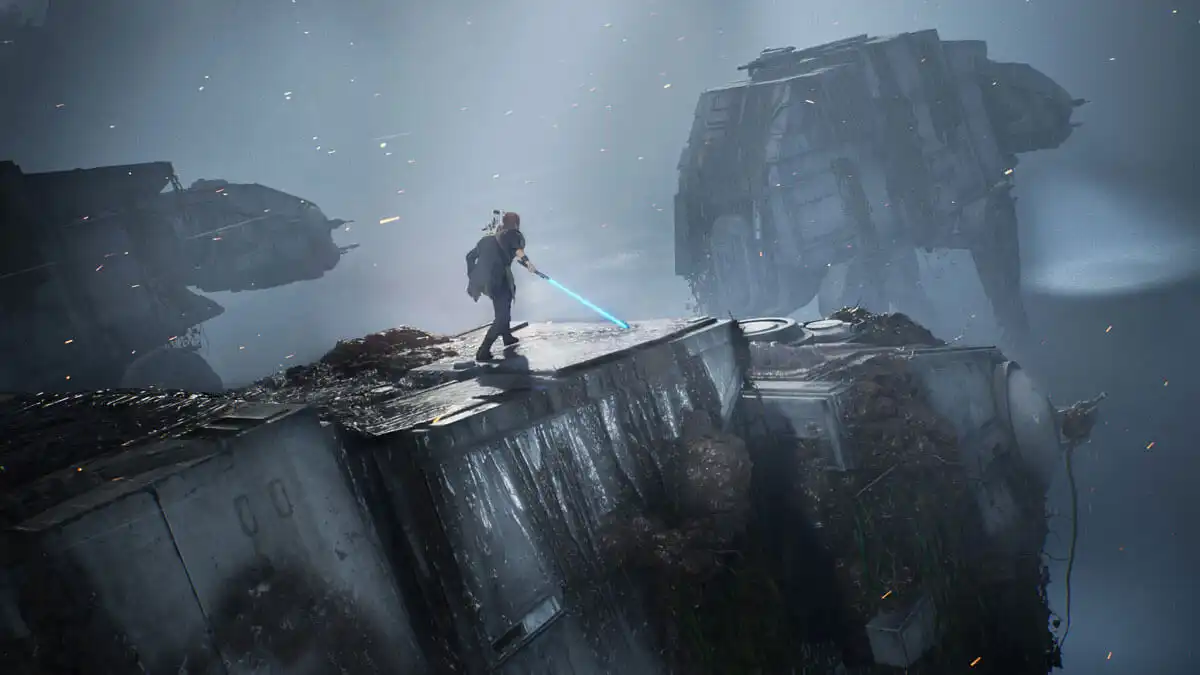
This game is another must play for me. Fantastic writing, some great Metroidvania and Souls-type play, really great level design and game mechanics, and a rich and engaging story that will stay with me for a long time. It has a great original soundtrack that really feels like Star Wars, too. I love how, as your character of Cal Kestis grows, the gameplay and level experience just keeps getting richer and richer. There are some great voice performances here too that I found touching, that get to the heart of Star Wars: rising to the call to action, the importance of found family, and trying to do what’s right.
This game is even more meaningful to me, as one of our very own alumni, who I was particularly close with, worked on the team and designed one of the levels for the game. It was so satisfying to see how incredible his work was, knowing that I had the fortune of playing a small part in his journey to success. Furthermore, I had worked with his father on the X-Wing series, so I feel like I’ve been blessed to be a part of their family’s legacy as well. To me, Star Wars is about family, and getting to play a part in their family story — it still gets me very emotional to this day.
1. Star Wars: X-Wing series (1993-1999)
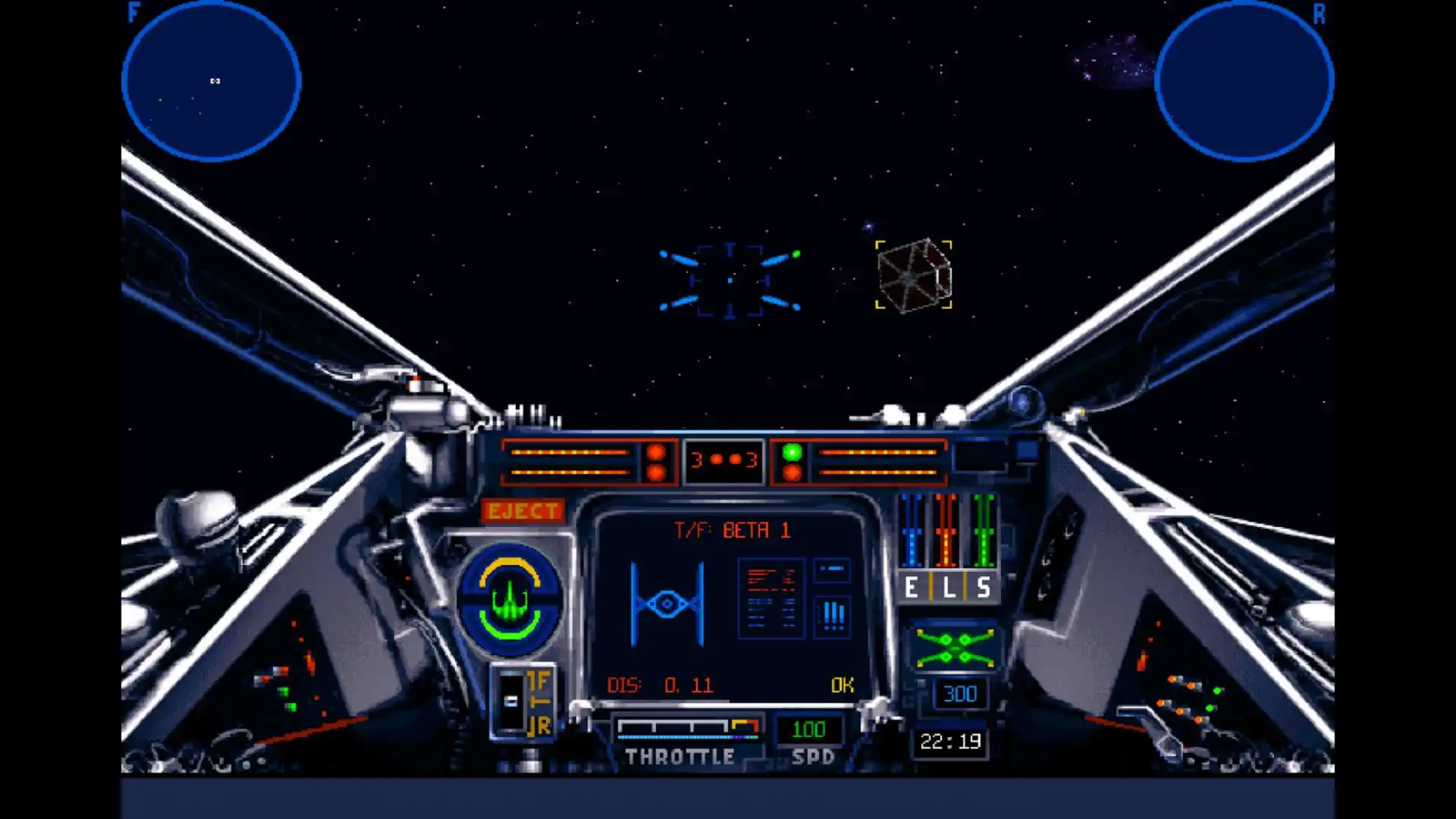
I realize this is a completely biased answer, but to me, the X-Wing series will always live in my heart as some of my best memories of not only gaming but of game development as well. At the time X-Wing came out, I was just a kid in New Jersey who loved Star Wars and computers, who never in a million years would have dreamed where this game’s impact would take me. X-Wing was phenomenal. It was my dream come true. I got to fly my favorite Rebel Alliance ships, blow up TIE fighters, swoop past Star Destroyers, and experience the Death Star trench run — all things I had been dreaming about since I first saw the film as an impressionable little kid.
And the missions were challenging! Some of them took many, many retries to get through — and even then, only by the skin of my teeth. Every victory felt like a victory, and every loss was heartbreaking and frustrating. There was so much of my personal emotion and investment in this game. I don’t know if any other game I’ve experienced since has reached me at such a deep level.
The original game came with a quasi-storybook and strategy guide called the Farlander Papers. In the final few pages of that book were pictures and bios of the dev team. I idolized them. They were my heroes. I needed to make missions for this game, and I spent countless hours — sometimes into the wee hours of the morning — doing just that, for fun. Through an amazing series of events (which would take far too long to go into here), I was able to get my foot in the door at LucasArts a few years later. That led to an interview at Totally Games, which was just starting to work on X-Wing vs. TIE Fighter. My heroes became my coworkers and some of my dearest friends.
